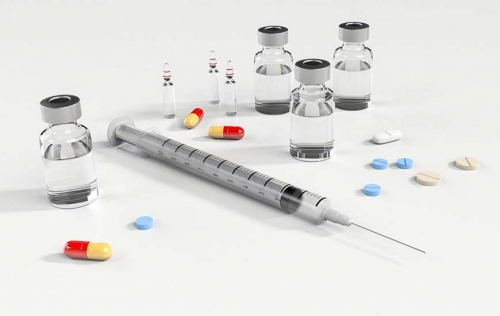
New drug shows promise for Hidradenitis Suppurativa treatment
February 27, 2020
An early study for a new injectable treatment shows improvement in Hidradenitis Suppurativa (HS) activity and pain scores while demonstrating safety. Dr. Alice Gottlieb of Icahn School of Medicine at Mount Sinai, New York led the research investigating the results of bermekimab use in 42 patients with Hidradenitis Suppurativa. The results were recently published in the Journal of Investigative Dermatology.
Interleukin-1 as target for HS Treatment
High amounts of interleukin-1 (or IL-1) were found in the drainage from severe HS lesions. So, drugs that block IL-1 might help treat HS. Drugs that block IL-1 were tried in small studies and showed some promise. This study was done to try a new drug, called bermekimab, in a bigger group of people with HS. The main goal was to make sure the drug was safe. The researchers also measured how well it worked to decrease symptoms and activity of HS.
Twelve Weeks of Bermekimab Treatment
There were 24 people with HS who did not have enough improvement with anti-TNFa treatment and 18 people with HS who never had anti-TNFa treatment in the study. All of them got a subcutaneous shot of bermekimab every week for 12 weeks. There was no placebo comparison – this is good because everyone got the drug, but we don’t know how much the drug helps people compared to nothing or another treatment.
Early study demonstrates safety and efficacy
The most common safety issues were redness, swelling, and soreness at the injection site and nausea. For the group of people who had prior anti-TNF treatment: 63% of people achieved HiSCR and as a group their pain scores decreased by 64% after 12 weeks of treatment. For the group of people who never had anti-TNF treatment: 61% of people achieved HiSCR and as a group their pain scores decreased by 54% after 12 weeks of treatment.
Bigger Studies Needed
The immune system is a big part of what causes HS. Treatments that target the high levels of immune chemicals (like interleukins and cytokines) are hoping to make a big difference. Interleukin-1 is emerging as an important treatment target and bermekimab may be a good treatment, but bigger studies are needed.

